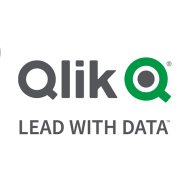

Find out what your peers are saying about Oracle, Anaplan, IBM and others in Business Performance Management.
In my organization, we moved from OBI to Qlik Sense due to limitations with OBI, resulting in very high ROI.
We have a multi-level support system, with the initial level handled by the company we bought the license from and subsequent support from IBM.
Instead, we rely on third-party partners recognized by IBM, who provide cost-effective support.
While tech support is comprehensive, the stability of Qlik Sense means I generally do not need it.
Technical support requires improvement.
In Turkey, the consultant firms are very professional, and they support you.
Scalability is quite hard to implement in TM1, largely since the on-premise installation chosen back in 2014.
Scalability is straightforward but it is pricey since it's a SaaS model priced per user.
It performs well in terms of performance and load compared to others.
Qlik Sense helps analyze data and can handle larger amounts of data compared to other BI tools.
I believe it is easily scalable.
This stability is really important as we use it for budget calculation, which is time-consuming.
The stability is very good.
The abundance of features results in complexity, requiring strict guidelines for developers to ensure simplistic approaches are adhered to.
IBM's visualization needs significant improvement.
Power BI has better visualizations and interactions with updates in 2023 that provide ease of use.
Providing an API feature to access data from the dashboard or QEDs could be beneficial.
There should be more comprehensive documentation and explanatory videos available to help clients understand and calculate capacity-based pricing, making it easier to predict costs before implementing Qlik Sense Cloud.
TM1 is quite expensive, and I'd rate the pricing as an eight out of ten.
While IBM's solutions were costly before, the introduction of SaaS models has reduced prices significantly.
Compared to Power BI, it is definitely costly.
Among the BI tools and data analytics tools, Qlik is the most expensive.
For small or large organizations needing many or few licenses, pricing varies.
Its stability helps controllers win time in their planning processes.
It also integrates machine learning and AI engines, enabling us to use algorithms for inventory forecasting which optimizes our inventory and replenishment rates.
From an end-user perspective, it's convenient and performance-oriented, providing something meaningful from all the organization's data.
It is a single product that I can use as an ETL database, BI, and more.
It has an interactive interface with Qlik graphs, pivot, and interactivity, which makes it easier to use than other tools.


IBM Planning Analytics is an integrated planning solution that uses AI to automate planning, budgeting, and forecasting and drive more intelligent workflows.
Built on TM1, IBM’s powerful calculation engine, this enterprise performance management tool allows you to transcend the limits of manual planning and become the Analytics Hero your business needs. Quickly and easily drive faster, more accurate plans for FP&A, sales, supply chain and beyond.
Qlik Sense is a visual analytics and business intelligence (BI) platform that gives users full control over their system’s data. From this platform they can control every aspect of their system data. It maximizes an organization’s ability to make decisions driven by their data.
Benefits of Qlik Sense
Some of the benefits of using Qlik Sense include:
Reviews from Real Users
Qlik Sense stands out among its competitors for a number of reasons. Two major ones are its associative analytics technology and its remote access capability. Qlik Sense employs an associative analytics engine that gives users the ability to take their data analytics to the next level. Users can create visual connections between different datasets spread across their network, creating deep insights that enable users to gain a full understanding of their data. This engine is easily scaled up to allow a large number of users to benefit from the deep insights that it provides. Users can access Qlik Sense from anywhere in the world. Qlik Sense has an online portal that can be used consistently from anywhere at all. Having the ability to remotely analyze data gives users flexibility when it comes to choosing how to deploy their manpower.
Jarno L., the managing director of B2IT, writes, “The associative technology features are the solution's most valuable aspects. Qlik was the first company to implement an in-memory associative analytics engine. This basically means that all data is loaded into memory, but it also means that instead of joining data together, the data is associated together. From the front end, from the user interface point of view, data can be joined or included or excluded on the fly. It can be drilled down and drilled through and users can slice and dice it and that type of thing can be done from anywhere in the data to any other place in the data. It doesn't have to be predefined. It doesn't have to have hierarchies or anything like that.”
Tami S., the senior business intelligence analyst at the La Jolla Group, writes, “With the changing business landscape, it is nice to access Qlik Sense through an external website. As an organization when we use QlikView Desktop, we need to connect to our internal network. We can access QlikView through the QlikView access point but the website has a little different look and feel than the desktop application. We appreciate that Qlik Sense is browser-based and the user experience is the same whether at home, in the office or on a boat. As long as the user has internet access, performance is the same.”
We monitor all Business Performance Management reviews to prevent fraudulent reviews and keep review quality high. We do not post reviews by company employees or direct competitors. We validate each review for authenticity via cross-reference with LinkedIn, and personal follow-up with the reviewer when necessary.